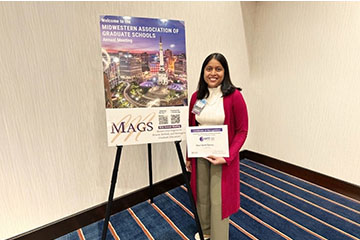CMU faculty run simulations to determine storm factors
Jason Keeler, Ph.D., from the Department of Earth and Atmospheric Sciences, has been running simulations to determine what factors make it more likely to storm
 Jason Keeler, Ph.D., a professor in the Department of Earth and Atmospheric Sciences, has been working with undergraduate student Brian Rakoczy to develop an algorithm that automatically detects and tracks gust fronts and thunderstorm outflow in a series of idealized simulations. Thunderstorm outflow is the spreading out of air that has been cooled by evaporating rain and melting hail in the storm. The rush of cool air that is experienced at the leading edge of the outflow is the gust front. These simulations are working to determine what factors make it more likely for there to be a storm, specifically when there was a storm previously in the day.
Jason Keeler, Ph.D., a professor in the Department of Earth and Atmospheric Sciences, has been working with undergraduate student Brian Rakoczy to develop an algorithm that automatically detects and tracks gust fronts and thunderstorm outflow in a series of idealized simulations. Thunderstorm outflow is the spreading out of air that has been cooled by evaporating rain and melting hail in the storm. The rush of cool air that is experienced at the leading edge of the outflow is the gust front. These simulations are working to determine what factors make it more likely for there to be a storm, specifically when there was a storm previously in the day.
The favorability of the atmosphere for thunderstorms is referred to as instability. The more unstable the atmosphere, the more likely there is to be a storm. Keeler’s simulations test several different factors, such as soil moisture or solar radiation, to see how the air on the cool side of the gust front changes due to alterations in these factors. It is usually assumed that when the air is cooler, it is less favorable for storms. However, other factors can increase instability levels.
This research is a part of a 3-year grant funded by the National Science Foundation. Central Michigan University is the lead institution on this research, working in collaboration with scientists at the University of Nebraska-Lincoln. The goal of running these simulations is to determine what conditions favor development of instability in outflow so that in the future, meteorologists can better determine the likelihood of a second storm following the first.
This story is brought to you by the Office of Research and Graduate Studies.




